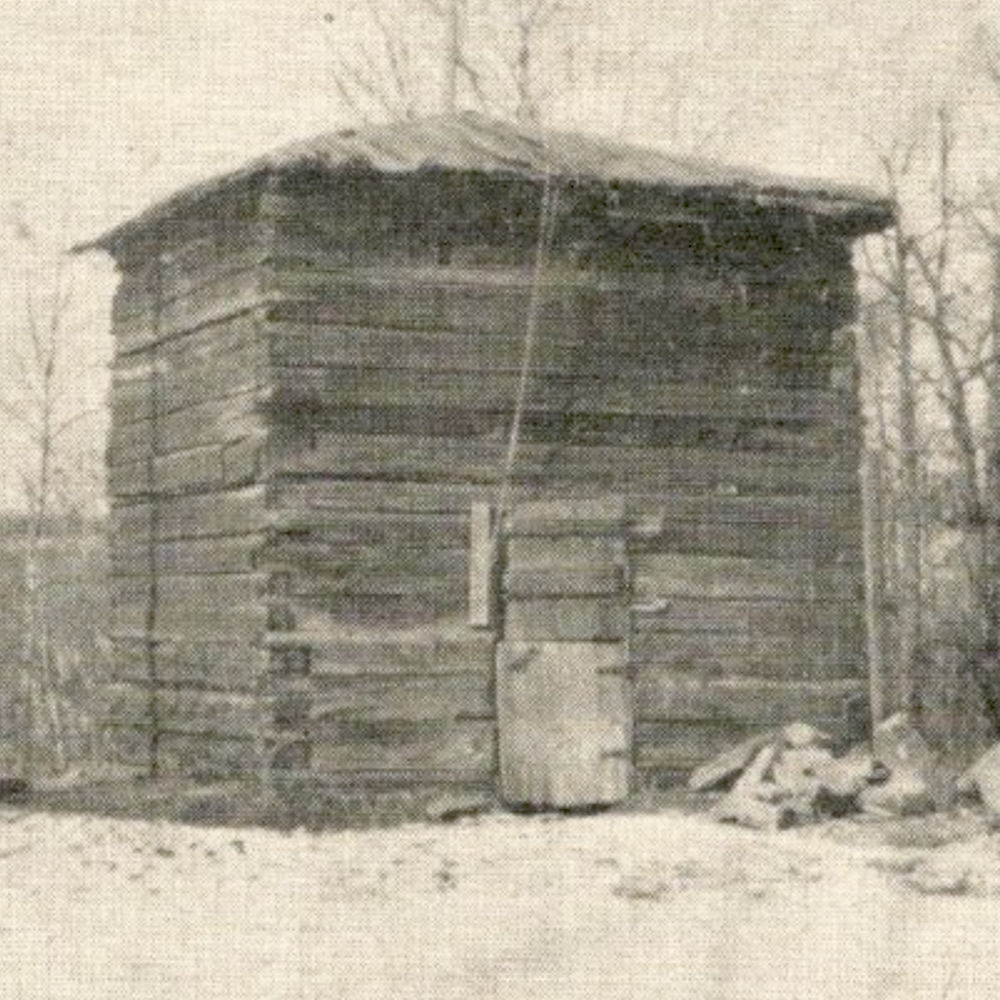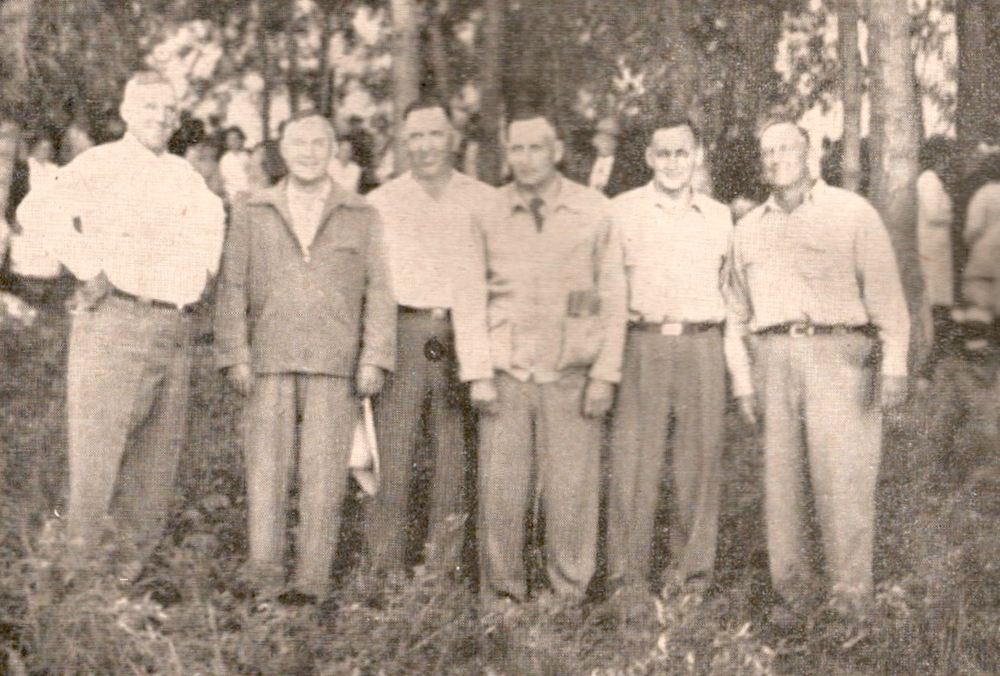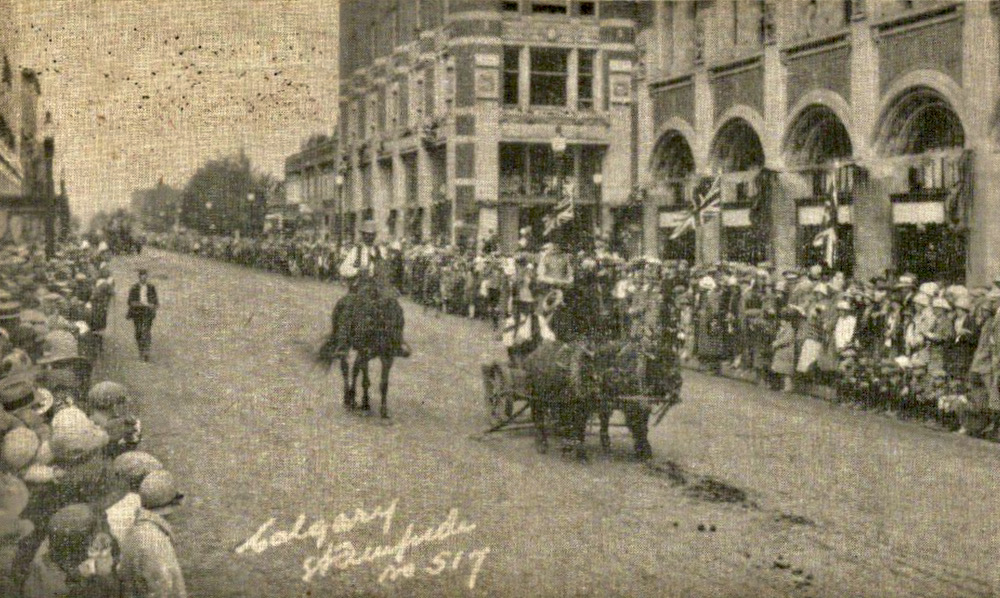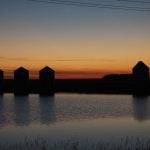Mrs. Joseph Hogge
By Dallas Banister Wright
Mrs. Catherine Matilda (“Cassie”) Hogge of Okotoks, Alberta, who knew this province seventy years ago, recently took me back with her to those early days when as a little girl, she travelled with her parents, the late Maurice and Agnes Stewart, from Clarenceville, Quebec, to the Western Prairies.
The journey began in 1882 when Maurice Stewart, a member of the Canadian Pacific Railway Construction crew, decided to send for his family so they could grow up with the West. Thus Cassie with her mother, four smaller brothers and sisters and two half-brothers set off to meet her father in Winnipeg. What a long, tedious journey it was! The first part was by boat over the Great Lakes, which in those days took over a month; then on by train to Winnipeg which Mrs. Hogge recalls as a village, its streets deep in sticky mud.
Read Also
History: Reminiscences of the North West Rebellion, 1885
Reminiscences of the North West Rebellion, 1885By Annie L. Gaetz ‘The seat of the North West Rebellion of 1885, was…
From Winnipeg the journey continued by train as far as the tracks were laid — somewhere between Moose Jaw and Regina. They rode on construction box cars, and men working on the tracks were surprised whenever they came upon the mother and children tucked in behind the construction materials. The tent they pitched for their first home in the West seemed comfortable by comparison. Beds were made on the floor and packing boxes served as their first furniture. One cook stove heated the tent, even in the coldest weather.
The two older boys, in their teens, were given jobs on the construction crew and Mrs. Stewart with her family kept moving the location of their “home” to keep up with the railroad as construction proceeded.
As the winter of 1882 approached, the rails had reached Swift Current, so they decided to spend the winter there in their tent home. It was a happy experience but Mrs. Hogge describes her mother as a “real pioneer.” Married at sixteen, she had a keen sense of humor and a personality that always saw the bright side. Food was mostly “sow belly,” bread her mother baked, and beans, beans, beans — no potatoes, no fresh vegetables. Milk was an unknown quantity, either fresh or canned, and Mrs. Hogge admits she is proof that children can get along without it. At intervals, Indians sold them fresh buffalo meat and this would relieve the monotonous diet.
The cold was bitter that first winter and the thermometer dropped to 60 degrees below zero. The tent, heated only by wood, seemed warm enough in daytime but at night, when the fire died out, it was bitterly cold. When the father would relight it in the morning, he would have to go back to bed before he could stand the surrounding temperature.
This lasted well into the winter until the camp superintendent returned east for a time and let them move into his wooden shack. It was still cold when he returned and to pitch the tent again, the men had to dig through snowdrifts three feet deep.
By summer, father Stewart decided the family should move on. He gave up his job to assist in the trek to Alberta, but before they left, tragedy struck. Another family moved into the district from Montana and the Stewart children, starved for companionship, rushed to meet the newcomers from whom they must have contracted Scarlet Fever which they later learned had claimed the life of one of the new settlers enroute. All the Stewart children came down with the disease and the baby grew desperately ill. There was no doctor to call, no modern drugs to administer. Finally the nearest doctor came down on the train engine from Maple Creek but he was too late. The baby died and the family moved on leaving a tiny grave in Swift Current.
The journey to Canmore, Alberta, their destination, took the whole summer, for transportation, this time by covered wagon and Red River Cart drawn by oxen. Another family, George Birch, made part of the journey with them.
The going was slow and tedious. Sometimes, Mrs. Hogge remembers, her mother would grow so tired of the jolting that she would walk behind the wagon awhile for a rest. On one such occasion her husband stopped the oxen and called to her that there was a snake ahead. She lost no time in getting back into the wagon. Ahead she saw a rattler coiled on the road, head reared to strike, but it was quickly dispatched with a bullet through the head.
Coming downhill was the hardest part of the trip, Mrs. Hogge says for you cannot hold oxen back, and this was the part her mother always dreaded. One of the oxen, too, always balked going up a hill. One day he was particularly unruly, when Mr. Birch unhitched one of his oxen, fastened it by a rope around the neck of the balky one and it pulled that ox up the hill almost choking the life out of it. Never again did the animal balk, but put on extra speed at every hill.
Finally Canmore was reached in the fall of ’83; the tent again became home until a log cabin with mud roof was put up. The tent seemed preferable to this, however, when torrential rains the following spring kept the cabin roof leaking unmercifully. Finally a larger house was completed and Mr. Stewart ran a stopping house for a time, but in the fall of ’85 just after the Riel Rebellion which the Stewarts escaped, they moved to Davisburg. The trip was made to the village of Calgary by rail in a settler’s car, from which a friend drove them in two wagons to the site of their new home in Davisburg. It was night and they were left alone. Again the tent was pitched but there was no supper that night. Next morning there was no water for breakfast, so Mr. Stewart and the boys took a pail to the Bow River, several miles distant. In the meantime, a sudden snowstorm arose. The men lost their bearings and some of the precious water. When they returned at noon after the squall had cleared, Mrs. Stewart had gathered enough snow for their first meal.
A home was built on the new site and the family moved in the day before Christmas after a beautiful fall. Mrs. Hogge lived there until her marriage in 1892 to Joseph Hogge who had formerly been a member of the C. P. R. bridge crew later taking up land in Davisburg. After farming for several years they moved to Okotoks in 1903. Mr. Hogge passed in 1945 but Mrs. Hogge still resides in Okotoks with her daughter.
















